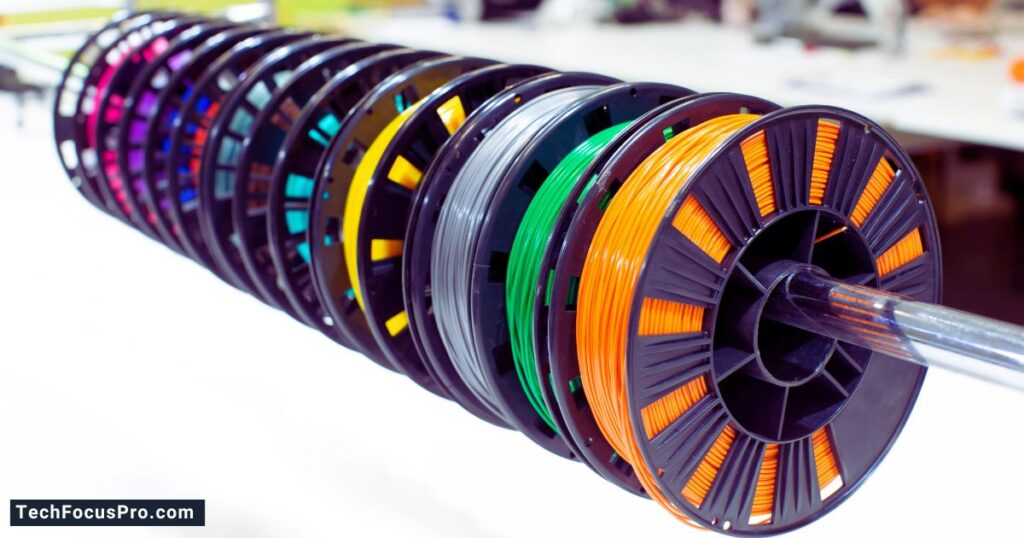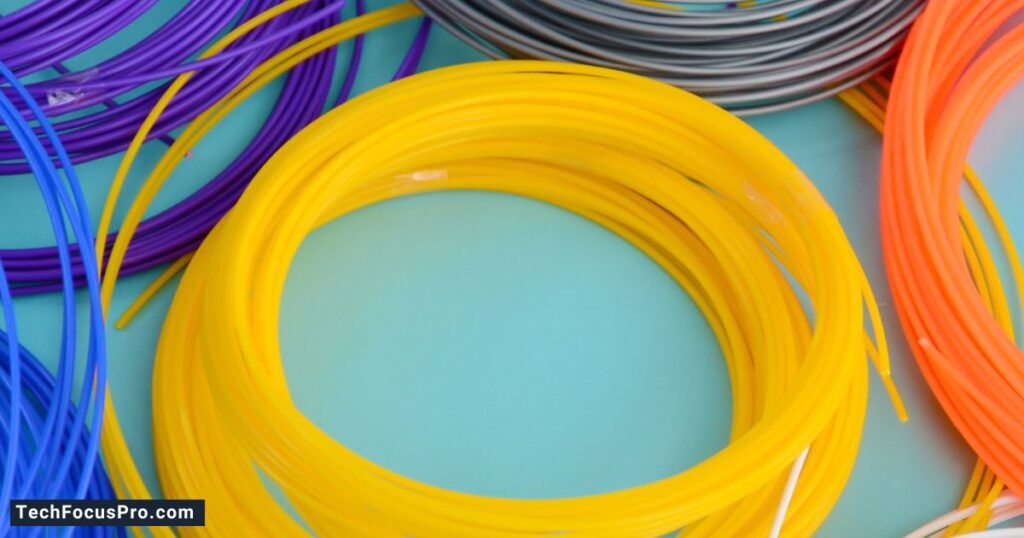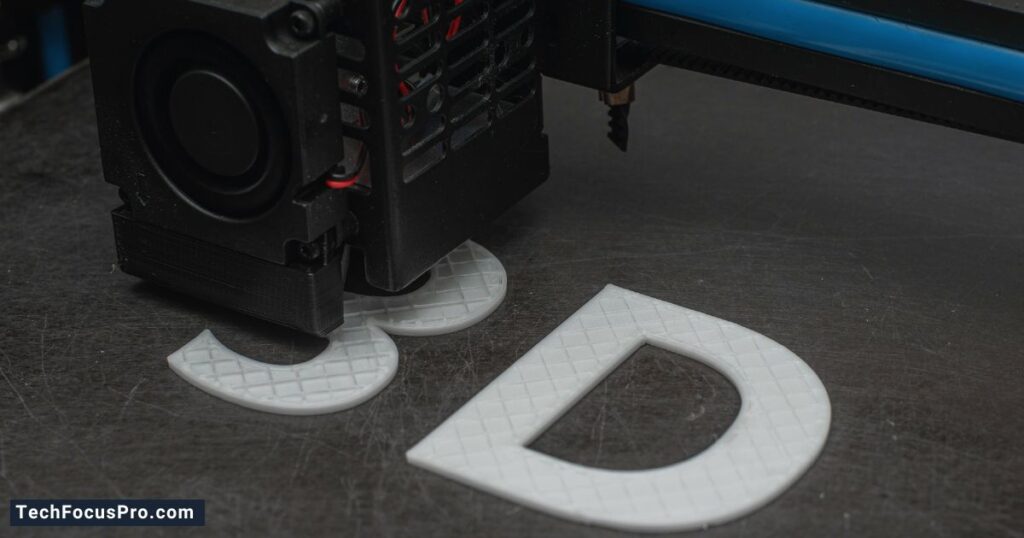3D Printer Filament: Best Materials For PLA Filament

3D printing has a fantastic impact on the creation process, enabling society to think and imagine more and more. Among the many elements that have the most significant influence on 3D printed parts is the selection of the core 3D printer filament.
However, among all the filaments available for 3D printers, PLA is one of the most popular and in demand not only by beginners but also by practitioners who work in the sphere.
As a preliminary step to the details of this article, the writers would like the readers to have some understanding of this 3D printer filament, especially the PLA filament. Therefore, in this article, the authors will describe what 3D printing is, what can or cannot be done with it, and what has to be done to facilitate suitable usage in the field of 3D printing.
What’s a 3D Printer Filament?
The thermoplastic type 3D printer filament feedstock material of the 3D Printer needs to be taken to the extruder of the 3D Printer and, by that time, comes out as an object. It is available in many formats and compositions based on the applications and is thus unique.
Some of the basic and most common filament types used in 3D printing include PLA, ABS, PETG, and TPU, and it is crucial to know each of them before using them for a given purpose. Choosing the suitable filament for the particular job is critical as it defines the strength and flexibility of the entire job and the final look of the finished product.
Read Also: 7 Benefits of Tracking Your Child’s Live Location
Types of Filament for 3D Printer

Among all the filaments that can be used by 3D printers, PLA (polylactic acid) is unquestionably the most popular because of its effortless usage, environmentally friendly nature, and good results. A thermoplastic degrades using biodegradable materials such as cornstarch or sugarcane, making PLA filament more ideal as a green material than the family of plastics, including ABS.
Key Characteristics of PLA Filament
★ Biodegradable: Derived from renewable raw material, it degrades under the proper environmental factors.
★ Low Printing Temperature: PLA material prints at a low temperature relative to other filaments, at ninety to two hundred and twenty degrees centigrade.
★ Minimal Warping: While ABS tends to pull away from where it was extruded and cool on the print bed, PLA filament does not tend to warp, so it is best to print large prints with PLA filament.
★ Wide Range of Colors and Finishes: There are several PLA colors, including clear ones, and some filaments have additives, such as wood or metal.
Use PLA Filament for 3D Printing – Here’s Why

Among the many reasons why PLA filament is often the go-to option for both inexperienced and seasoned 3D printers are the following:
★ Ease of Use: PLA is a well-loved print material for its family-friendly characteristics regarding the printing process. It just doesn’t need a heated bed, although it is beneficial to use one, and it is far less likely to warp than other materials such as ABS.
★ Eco-Friendly: PLA is a plant-based product, and it is eco-friendly since it can be decomposed naturally by microorganisms. Once disposed of, it returns to nature. It is also produced to be environmentally friendly compared to the filaments produced with petrochemicals.
★ Great Print Quality: It is characterized by high print quality, smooth surface results, and excellent fine details. Therefore, it is suitable for making complex models or components with many small features.
★ Versatility: PLA filament is suitable for all purposes ranging from school projects to hobbyists and is perfectly good for industrial purposes and uses.
PLA Filament’s Use in 3D Printing

Since PLA filament can be used in various applications, its use is relatively high. Among the most popular applications are:
★ Prototyping: PLA is used in most printers to produce prototypes; it prints fast and has excellent accuracy in the dimensions.
★ Educational Models: PLA material is non-toxic and easy to operate, and many schools and universities have adopted it to print models for teaching.
★ Consumer Products: In addition to figurines, PLA can be used to create ornaments, home accessories, and other items where looks and fit matter, with smooth surfaces.
Getting the best results out of PLA Filament Boot Camp
To achieve optimal results with PLA filament, follow these essential tips:
★ Temperature Settings: Ensure that your Printer’s hot end range is between 190°C and 220°C, which is suitable for operation. Stringing may occur at high temperatures, while at low temperatures, it may lead to inadequate fusion between layers of plastic.
★ Bed Adhesion: While a heated bed is optional for PLA, adjusting bed temp to 50c – 60c will make its adhesion less likely to warp.
★ Cooling Fans: Thus, it can be concluded that PLA material gives optimum performance only if cooled sufficiently. You should ensure that your Printer’s fans are at a high level to ensure that the material is solidified quickly for good-quality prints.
★ Storage: PLA is hygroscopic; it attracts moisture from the surrounding environment like any porous material. Packing your PLA filament well in an airtight and dry manner is also advisable to remove moisture from influencing your prints.
FAQs:
Is PLA filament safe to use?
Yes, PLA is among the 3D printing filaments that you can work with without the risk of a dangerous reaction. The product is non-toxic and eco-friendly, so it can be used in homes and schools.
Is it possible to use PLA filament to print functional parts?
However, PLA, with its fabulous print quality, is not recommended for creating parts that require strength or high heat. For such projects, filaments that may be preferred include ABS or PETG filaments.
Does PLA filament require a heated bed?
Well, PLA doesn’t necessarily need a heated bed. Still, you can use it to enhance bed adhesion and reduce warping.
How do I store PLA filament?
Like most thermoplastics, PLA should be kept dry in its original packaging, with the cap tightly closed and a small bag of desiccant inside to minimize moisture.
Conclusion:
In conclusion, PLA filament remains the most popular form of 3D printing filament because of its ease of use, environmental friendliness, and versatility, which enable it to be used in various projects. If you are a beginner or professional, using PLA filament guarantees good-quality prints without much effort. Therefore, its fine surface finishes, details, and repeatability make it suitable for prototypes, education models, and intricate appearance. Hence, choosing the right kind of 3D printer filament for your work ensures that your work is successful and meets high standards.
Image credits: Canva






